Using Indigenous Plants
QUINHAGAK, ALASKA– Along with two elders and six students, I journeyed to a field camp near the Yup’ik village of Quinhagak last week. Dr. Kevin Jernigan, from University of Alaska’s Kuskokwim Campus, and I collaborated to co-teach a college-level class titled, ‘Introduction to Ethnobotany’.
The Yup’ik, the native peoples of the Yukon-Kuskokwim delta region, have lived at this site since at least 1,000 AD. The village is located at the mouth of the enchanting Kanetok River, on the shore of Kuskokwim Bay of the Bering Sea.
What is ethnobotany? It is the study of how people of a particular culture use indigenous plants for provisions such as medicine, food, shelter and religious ceremonies. Botany, or the study of plants, forms the foundation for ethnobotany.
The aim for the course was to survey basic concepts of botany and ethnobotany, with emphasis on the native flora of Alaska and how people use these plants. I was paired with Kevin, an ethnobotanist, to introduce students to the fundamentals of plant biology and taxonomy (classification). My aim was to teach students to recognize regionally important plant families based on field characteristics and by using scientific keys. We also discussed methods of plant collection, including curation and ethical collecting concerns relating to plant conservation.
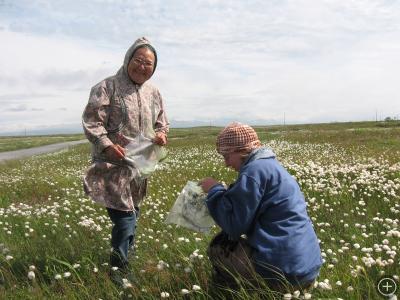
In the field, students collect tundra plants. The tundra is carpeted with an endless sea of the tufted fruits of cotton grass (Eriophorum russeolum).
In turn, I learned from Kevin the general principals of ethnobotany, including its history and importance in traditional and modern culture. We were fortunate to also be accompanied by two Yup’ik elders, Annie from Quinhagak and Cecilia from nearby Chevak. With their guidance, we discussed the cultural relevance of the native flora to the Yup’ik, as well as its traditional use for food and medicines.
Although I was an instructor for the class, quite often I also played the role of learner. Not only did I learn from Kevin, I also learned from both the elders and students about their dependence upon the regional flora. Moreover, I quickly learned that I must adapt my university honed teaching philosophy. The class was taught in English, however the elders’ native language is Yup’ik. Furthermore, nearly every student was bilingual. Our discussions alternated between languages and required translation both to and from Yup’ik. I found this process absolutely fascinating.
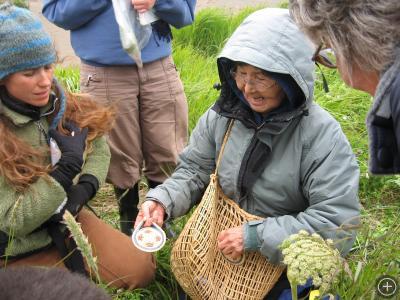
Annie shares a beautiful bag constructed from a common seaside grass, or tapernaq in Yup’ik (Elymus arenarius).
On one occasion, I shared a plant with the class that Cecilia recalled from her youth. The plant, marsh five-finger (Potentilla palustris), is prevalent in wet tundra in western Alaska. She clutched the plant in her outstretched hand and asked quietly in her timid English, “Where did you find this plant?” I shared that I collected it nearby in the tundra surrounding the village. As she admired the plant, she shared her story about the marsh five-finger in Yup’ik. While the language was unfamiliar, her enthusiasm about and her high regard for the plant was apparent. I learned through translation that she remembered her grandmother collecting the plant when she was a very young girl. It was collected, dried, ground and drank in a tea as a substitute for coffee.
We had many similar plant encounters throughout the week; it was truly a dynamic learning experience for us all.





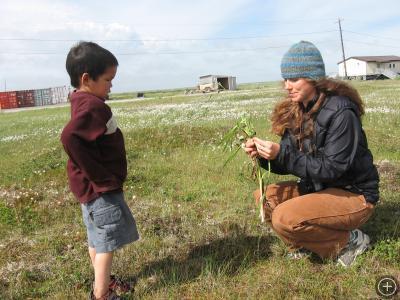
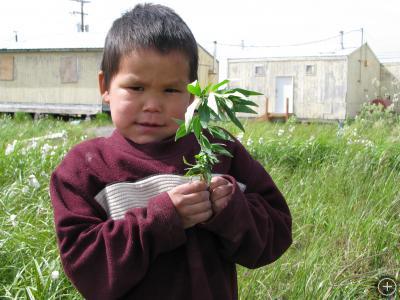

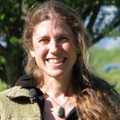

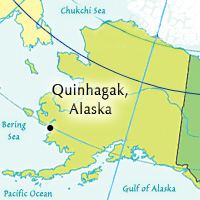





Hi Amy,
I noticed the entry you posted of how one of the elders showed you her purse made of a specific plant that was constructed from a common seaside grass, or tapernaq in Yup’ik (Elymus arenarius) and am very curious as to what were some other uses of indigenous plants for provisions such as medicine and religious ceremonies found?
That looks fun and interesting.
Greetings Amy!
Lovely post, it sounds like you had a super time! I am working here in southern Vancouver Island as a herbalist/aromatherapist/distiller/ethnobotany gal, with a number of projects underway many of which tie in with my work with Indigenous peoples internationally – I have a great adventure ahead of me – coming up to the north in October – specifically western NWT, Hay River, Ft.Simpson region – to teach young people about plants & entrepeneurism!
Have you published anything that might be helpful? I am quite concerned about being able to find plants (at that time of year too!) that might be useful during gathering workshops with the young people… any ideas or help would be very gratefully accepted!
You can learn more about me through my web site, dragonflydreaming.com – I’m quite okay though I promise!
Best wishes – Beth Lischeron
Excellent and very informative post.
Hi Amy,
When I was on a bus trip from Anchorage to Seward last June we passed a woman bent over along the road in the drizzling rain with a bucket picking something. I have been trying to find out ever since what she might have been gathering and searched several sites to find out if she could have been picking sour dock leaves at that time of year, but no luck so far.
I did however come across your post and enjoyed reading the many interesting posts on the website.
Blessings to all of you who do this work.
Charlotte